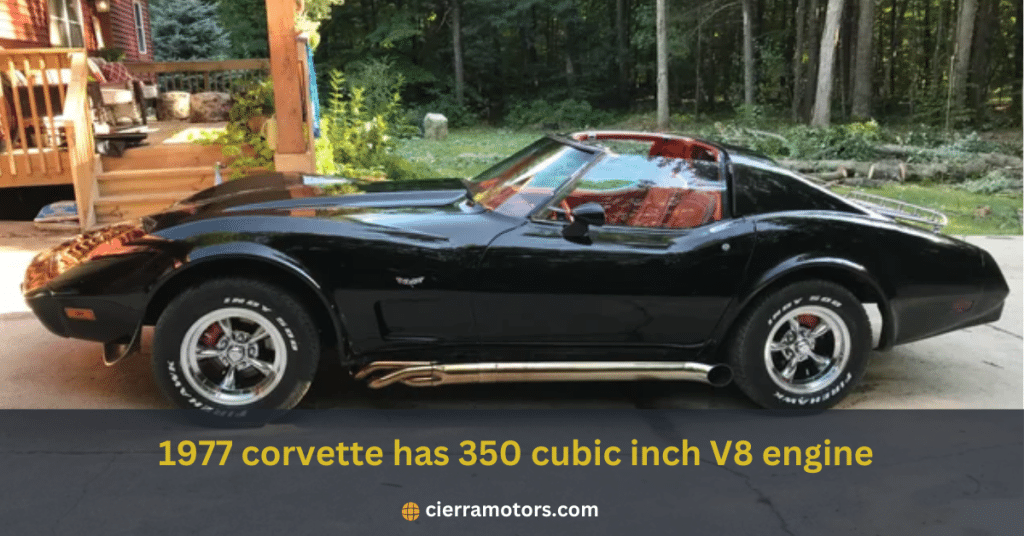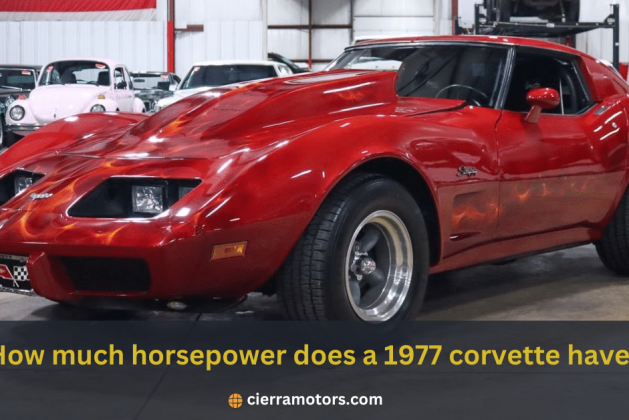The Corvette, often heralded as America’s iconic sports car, has a rich history of power and performance that captivates car enthusiasts worldwide. Among its many iterations, the 1977 model year stands out for its distinctive design and intriguing horsepower. For classic car fans and those interested in American automotive history, understanding the horsepower of this particular Corvette model is a fascinating exploration into the machine that has symbolized the art of the American drivetrain for generations.
A Brief History of the 1977 Corvette
The 1977 Corvette marked a unique time in automotive history. It was a model year amid a global energy crisis, which had already begun to shift consumer taste towards more fuel-efficient vehicles. However, the Corvette, which had developed a reputation for its performance and styling, remained popular and underwent subtle changes that year, setting the stage for technological advancements.
In the late ’70s, the American automotive industry navigated regulatory shifts and consumer demands, directly impacting vehicles’ design and powertrains like the ’77 Corvette. Despite these challenges, the Corvette maintained its status as a quintessentially American machine, blending luxury, performance, and style.
Understanding Horsepower in Automotives
Horsepower is a simple measure of a car’s engine strength to the novice. Yet, it is a nuanced concept intertwined with the very fabric of car design and performance. The term “horsepower,” coined by James Watt to sell steam engines, is a measure of power that has evolved to become the industry’s standard to denote energy produced by car engines.
Horsepower in car engines often refers to the net power produced, which is the power available at the wheels to accelerate the vehicle. In practical terms, more horsepower typically translates to higher speeds and faster acceleration. However, a high-powered engine does not necessarily guarantee a superior driving experience. Instead, it must be balanced with the car’s weight, aerodynamics, and handling capabilities for optimal performance.
Specifications of the 1977 Corvette

The 1977 corvette has a350 cubic inch V8 engine
Unveiled in a period of efficiency consciousness, the 1977 Corvette showcased a 350 cubic inch V8 engine. This robust power plant, part of Chevrolet’s long-standing legacy in creating engines for muscle cars, was offered in two versions: the L48, with an output of 180 horsepower, and the L82, which boasted an impressive 210 horsepower.
The L82 engine featured a larger four-barrel carburetor that allowed for improved airflow, and combined with a higher compression ratio, it generated 210 horsepower at 5200 rpm and 255 lb-ft of torque at 3600 rpm. This enhancement not only affected the Corvette’s straight-line speed but also its overall efficiency.
Regarding performance, the 1977 model year it represented a compromise due to increasing federal regulations on emissions and safety that impacted not only horsepower but also the body’s design. Despite these challenges, the third-generation Corvette still managed to sprint to 60 mph in as little as 7.8 seconds, a sporty figure for the era.
Additionally, driving a ’77 Corvette meant experiencing a feature-laden cockpit with power windows, tilt-telescopic steering, and an optional AM/FM stereo radio with a tape player. These luxuries and its characteristic V8 growl ensured that the Corvette’s allure was far from just skin deep.
Impact and Legacy of the 1977 Corvette
While the ’77 Corvette may not have been the most potent iteration, its legacy resonates with many enthusiasts. It represents the Corvette’s adaptability, showing that it could maintain a balance of power and performance that kept fans loyal even in the face of environmental and economic challenges.
This model year also set the stage for future innovations that would eventually propel the Corvette to be a global contender in the sports car market. The focus on balance between power and comfort would be a hallmark of later models, enriching the Corvette’s legacy and shaping the performance car landscape for decades.
The Driving Experience
Behind the wheel, the 1977 Corvette offered a nostalgic, American motoring experience. The roar of its V8, the firmness of its suspension, and the raw, mechanical feedback through its steering wheel connected the driver to the road with distinctly analog sensations.
Even with the less potent L48 option, the ’77 Vette provided an engaging ride that allowed enthusiasts to appreciate the vehicle’s lineage and philosophy. The torquey nature of its engine meant that power was accessible across a wide range of revs, making it a joy both in city driving and on the open road.
The Corvette’s handling, while not as track-focused as its modern counterparts, was nonetheless responsive and well-tuned to the vehicle’s power delivery. Drivers could confidently push the ’77 Corvette through corners, enjoying a balanced combination of performance and comfort.
Significance of the 1977 Corvette’s Horsepower in the Automotive History
The 1977 Corvette serves as a poignant time capsule, capturing a moment in automotive history when industry-wide changes necessitated the evolution of American muscle. While not the highest of its kin, its horsepower represented a concerted effort to balance performance with efficiency and compliance, which would become standard practice in engineering circles.
This model year was pivotal for the Corvette, demonstrating the marque’s resilience in turbulent times. It also underscored the importance of horsepower not as a mere number but as a metric that must be integrated into the broader context of engineering and consumer preferences.
FAQs
Q. Does the 1977 Corvette take much gas?
A. The fuel consumption of the 1977 Corvette varies depending on the engine and driving conditions. The L48 engine, the more fuel-efficient of the two offered, could achieve around 15 miles per gallon in the city and about 21 mpg on the highway. The more powerful L82’s thirst was a bit drier, with an estimated 14 mpg in the city and 19 mpg on the road.
Q. What do I look for when buying a used 1977 Corvette?
A. When purchasing a used 1977 Corvette, it is essential to look for signs of body integrity and rust, inspect the engine’s condition, and ensure that all features and options in the interior are functioning correctly. Engaging with a Corvette specialist or mechanic can often provide invaluable insights and save the buyer potential headaches in the future.
Q. Is the 1977 Corvette a collectible?
A. The 1977 Corvette is a collectible, with many enthusiasts and collectors valuing its historical significance and performance characteristics. However, as with any vehicle in this category, conditions, rarity, and originality play significant roles in determining a car’s value. A well-maintained ’77 Corvette can fetch a handsome sum at auction or in the private market.
Q. Why is the 1977 Corvette considered a turning point in Corvette history?
A. The 1977 Corvette is considered a turning point in Corvette history because it marked the beginning of significant changes for the marque. It was the last model year of the third-generation Corvettes, which had been in production since 1968. The ’77 Vette also faced many challenges due to increasing regulations on emissions and safety, forcing engineers to find ways to balance performance with compliance. This model year’s innovations would set the stage for future generations of Corvettes and help establish the car as a global contender in the sports car market. Hence, the pivotal moment shaped the Corvette’s history and legacy.
Q. What other notable features did the 1977 Corvette have?
A. The ’77 Corvette boasted a luxurious interior, a powerful V8, and a dynamic body for enhanced performance. It featured an updated suspension for better handling, power windows, and more. This model set the standard for future Corvettes with a unique blend of features. Despite not breaking horsepower records, its capabilities made it a standout in the automotive world. The 1977 Corvette remains an essential part of Corvette’s history and the story of American muscle cars, captivating car enthusiasts worldwide.
In Conclusion
The 1977 Corvette’s horsepower is a testament to the American penchant for powerful engines and the enduring legacy of one of the world’s most beloved sports cars. It is not just a number but a chapter in the Corvette’s story that resonates with anyone who has felt the thrill of the V8 engine. For those who cherish automotive history, the 1977 Corvette’s horsepower is a marker of a pivot point in the industry, where cars learned to balance power with the changing demands of the times.



Leave a comment